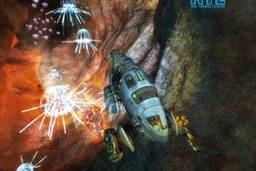Military families response to reading this story is -
A. What the Fuck!
B. I support my commander in chief.
money quote
In Washington, a spokesman for Kerry's campaign said the Bush administration "must answer for what may be the most grave and catastrophic mistake in a tragic series of blunders in Iraq."
By WILLIAM J. KOLE, Associated Press Writer
VIENNA, Austria - Several hundred tons of conventional explosives were looted from a former Iraqi military facility that once played a key role in Saddam Hussein (news - web sites)'s efforts to build a nuclear bomb, the U.N. nuclear agency told the Security Council on Monday.
A "lack of security" resulted in the loss of 377 tons of high explosives from the sprawling Al-Qaqaa military installation about 30 miles south of Baghdad, International Atomic Energy Agency chief Mohamed ElBaradei said.
The IAEA fears "that these explosives could have fallen into the wrong hands," said spokeswoman Melissa Fleming.
The development immediately became an issue on the U.S. presidential campaign trail, with the White House downplaying the threat from the missing cache of weapons but Sen. John Kerry (news - web sites)'s campaign calling the disappearance a "grave and catastrophic mistake."
ElBaradei told the council the IAEA had been trying to give the U.S.-led multinational force and Iraq (news - web sites)'s interim government "an opportunity to attempt to recover the explosives before this matter was put into the public domain."
But since the disappearance was reported in the media, he said he wanted the Security Council to have the letter dated Oct. 10 that he received from Mohammed J. Abbas, a senior official at Iraq's Ministry of Science and Technology, reporting the theft of the explosives.
The materials were lost through "the theft and looting of the governmental installations due to lack of security," the letter said.
The letter from Abbas informed the IAEA that since Sept. 4, 2003, looting at the Al-Qaqaa installation south of Baghdad had resulted in the loss of 214.67 tons of HMX, 155.68 tons of RDX and 6.39 tons of PETN explosives.
HMX and RDX can be used to demolish buildings, down jetliners, produce warheads for missiles and detonate nuclear weapons. HMX and RDX are key ingredients in plastic explosives such as C-4 and Semtex ??? substances so powerful that Libyan terrorists needed just 1 pound to blow up Pan Am Flight 103 over Lockerbie, Scotland, in 1988, killing 170 people.
ElBaradei's cover letter to the council said the HMX had been under IAEA seal and the RDX and PETN were "both subject to regular monitoring of stock levels."
"The presence of these amounts was verified by the IAEA in January 2003," he said.
At the Pentagon (news - web sites), an official who monitors developments in Iraq said U.S.-led coalition troops had searched Al-Qaqaa in the immediate aftermath of the March 2003 invasion and confirmed that the explosives, under IAEA seal since 1991, were intact. Thereafter, the site was not secured by U.S. forces, the official said, also speaking on condition of anonymity.
The Iraqis told the nuclear agency the materials were stolen and looted because of a lack of security at governmental installations, Fleming said.
"We do not know what happened to the explosives or when they were looted," she told AP.
A European diplomat familiar with the disappearance of the explosives said their presence was widely known.
The Associated Press drove past the compound Monday and saw no visible security at the gates of the site, a jumble of low-slung, yellow storage buildings that appeared deserted.
Iraq's interim government warned the United States and U.N. nuclear inspectors earlier this month that the explosives had vanished.
"Upon receiving the declaration on Oct. 10, we first took measures to authenticate it," Fleming said. "Then on Oct. 15, we informed the multinational forces through the U.S. government with the request for it to take any appropriate action in cooperation with Iraq's interim government.
Bush's national security adviser, Condoleeza Rice, was informed after Oct. 15, and then she notified Bush, the White House said.
During an Air Force One trip Monday between Texas and Colorado, White House press secretary Scott McClellan said the administration's first concern was whether it was a nuclear proliferation threat, and it had determined it was not.
"Remember at the end of Operation Iraqi Freedom there was some looting, and some of it was organized," McClellan said. "There were munitions caches spread throughout the country, and so these are all issues that are being looked into by the multinational forces and the Iraqi Survey Group."
The probe will include finding out what happened to the weapons and whether they are being used against U.S. forces, he said.
In Washington, a spokesman for Kerry's campaign said the Bush administration "must answer for what may be the most grave and catastrophic mistake in a tragic series of blunders in Iraq."
"How did they fail to secure … tons of known, deadly explosives despite clear warnings from the International Atomic Energy Agency to do so?" senior Kerry adviser Joe Lockhart said in a statement.
"They were urgently and specifically informed that terrorists could be helping themselves to the most dangerous explosives bonanza in history, but nothing was done to prevent it from happening."
Before the war, inspectors with the Vienna-based IAEA had kept tabs on the so-called "dual use" explosives because they could have been used to detonate a nuclear weapon. Experts say HMX can be used to create a highly powerful explosion with enough intensity to ignite the fissile material in an atomic bomb and set off a nuclear chain reaction.
IAEA inspectors pulled out of Iraq just before the 2003 invasion and have not yet been able to return despite ElBaradei's repeated urging that the experts be allowed back in to finish their work.
ElBaradei told the Security Council before the war that Iraq's nuclear program was in disarray and that there was no evidence to suggest it had revived efforts to build atomic weaponry.
Saddam was known to have used the Al-Qaqaa site to make conventional warheads, and IAEA inspectors dismantled parts of his nuclear program there before the 1991 Gulf War (news - web sites). The experts also oversaw the destruction of Iraq's chemical and biological weapons.
The nuclear agency pulled out of Iraq in 1998, and by the time it returned in 2002, it confirmed that 35 tons of HMX that had been placed under IAEA seal were missing.
ElBaradei told the United Nations (news - web sites) in February 2003 that Iraq had declared that "HMX previously under IAEA seal had been transferred for use in the production of industrial explosives, primarily to cement plants as a booster for explosives used in quarrying."
"However, given the nature of the use of high explosives, it may well be that the IAEA will be unable to reach a final conclusion on the end use of this material," ElBaradei warned at the time.
"A large quantity of these explosives were under IAEA seal because they do have a nuclear application," Fleming said Monday.
The nuclear agency has no concrete evidence to suggest the seals were broken, Fleming said, but a diplomat familiar with the agency's work in Iraq said the seals must have been broken if the explosives were stolen.
IAEA analysts have viewed satellite photographs of Al-Qaqaa, and only two storage bunkers showed damage that may have occurred in bombing during the war, an agency source told AP. The other bunkers were intact.
Aaron Sarver is an independent audio producer and writer based in Chicago. His work has appeared in In These Times, The Chicago Reader, Alternet.org, and on Free Speech Radio News. For nearly three years he produced and co-hosted the radio program, Fire on the Prairie, which featured interviews with progressive writers and activists, and is archived at fireontheprairie.com.



